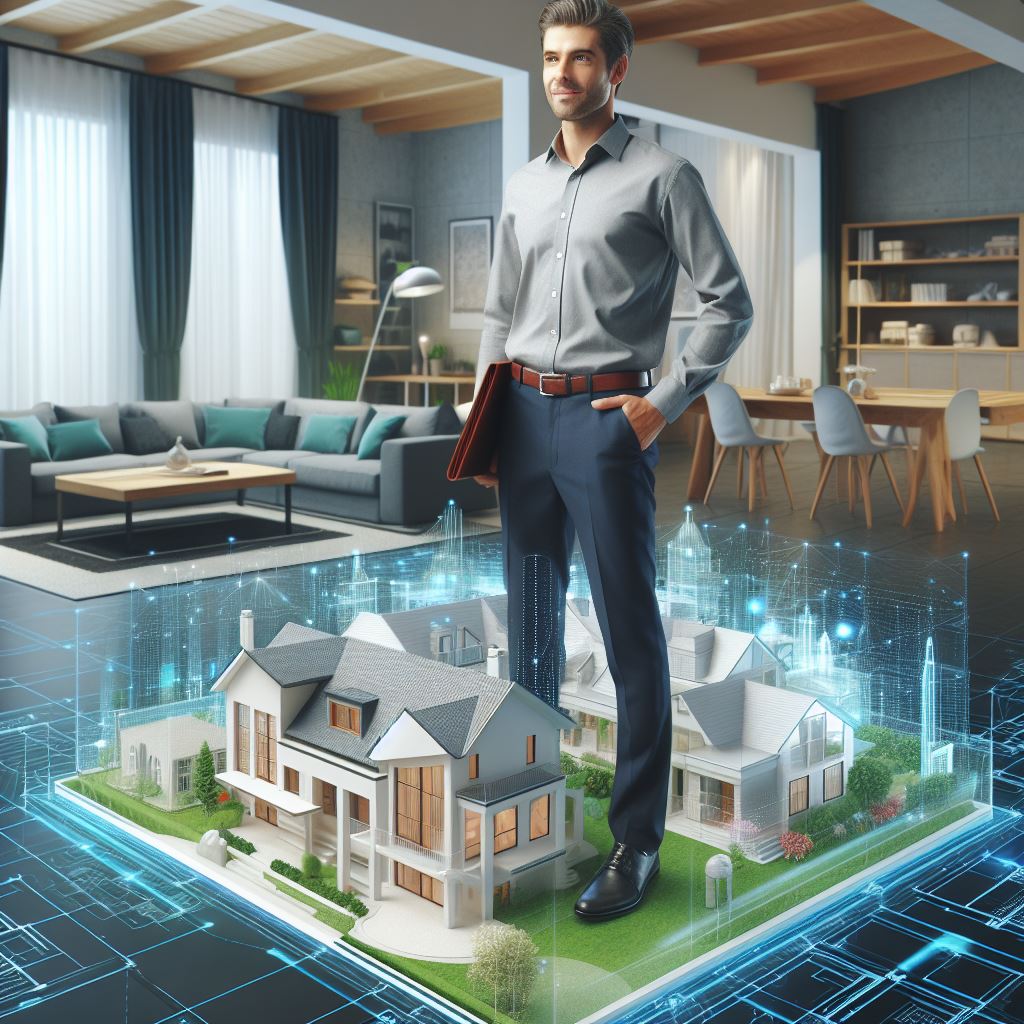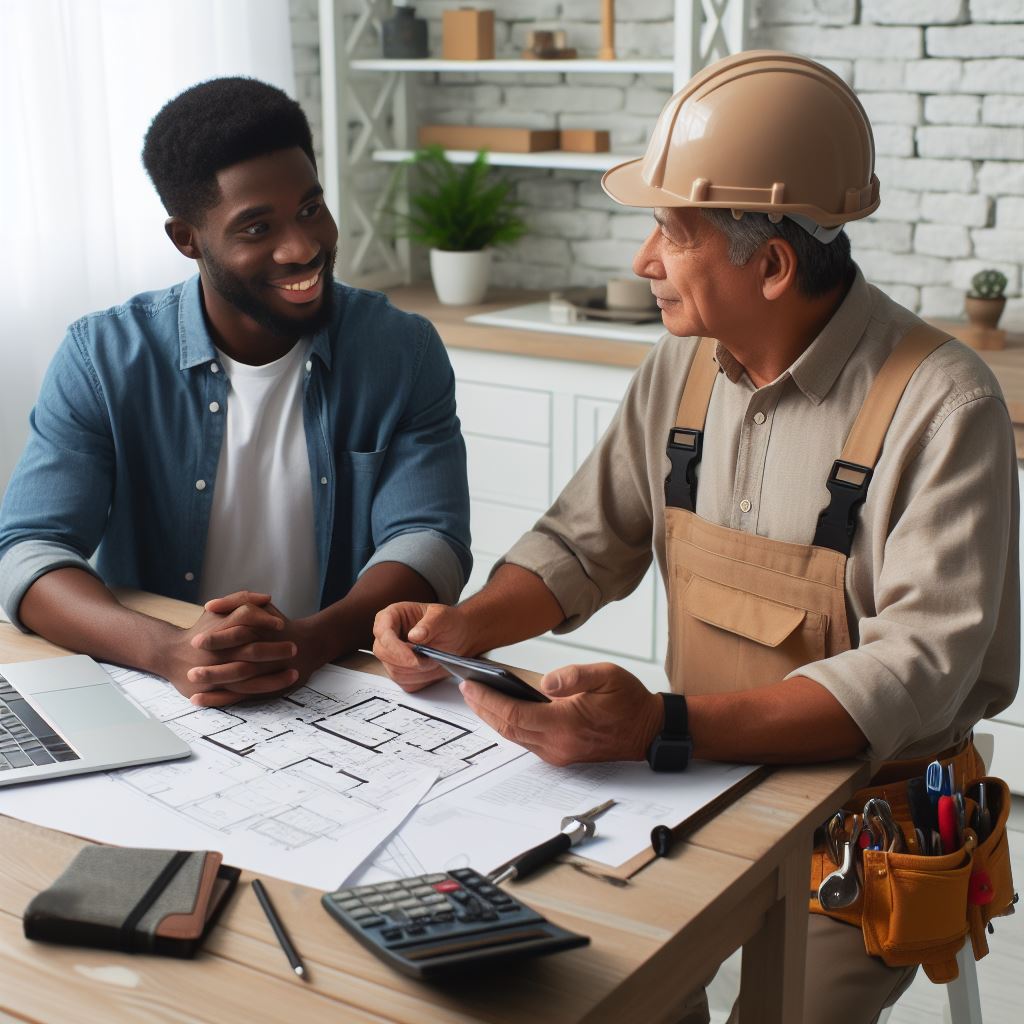Introduction
In today’s digital age, 3D modeling has become an essential tool for industries across the board.
With its realistic representation and ability to visualize concepts, 3D modeling has revolutionized the field of home design.
Gone are the days of two-dimensional blueprints and floor plans.
Architects and designers can now create stunning, immersive virtual models that accurately depict the final product.
Using sophisticated software, they can incorporate intricate details, choose from an array of materials, and experiment with different layouts.
Not only does 3D modeling enhance the creative process, but it also facilitates effective communication between designers, clients, and contractors.
With a virtual tour of the proposed design, clients can better understand the vision and make informed decisions.
This streamlines the decision-making process and reduces the chances of costly mistakes during construction.
Furthermore, 3D modeling provides a more realistic representation of the final product, helping clients visualize the end result before it is built.
They can see how light interacts with the space, the flow of different areas, and the overall aesthetics.
Read: Navigating Contractor Selection: A Step-by-Step Guide
Benefits of 3D Modeling in Home Design
3D modeling has revolutionized the home design industry, offering numerous benefits to homeowners, designers, and contractors.
By creating realistic and detailed visual representations of design ideas, 3D modeling allows for improved visualization.
A. Improved Visualization
One of the significant advantages of 3D modeling is the ability to have a clearer visual representation of design ideas.
Homeowners and designers can now envision their dream homes with greater precision and detail.
This empowers them to make more informed decisions about home aesthetics and functionality.
B. Efficient Communication
Furthermore, 3D modeling plays a crucial role in efficient communication during the design and construction process.
Design concepts can be effectively conveyed to clients, contractors, and other stakeholders through 3D models.
This visual representation eliminates misunderstandings and ensures everyone involved is on the same page.
By reducing the chances of costly errors during construction, 3D modeling helps streamline the entire building process.
C. Cost and Time Savings
In addition to improved visualization and efficient communication, 3D modeling also offers cost and time savings.
By identifying potential issues or conflicts in the design early on, 3D models enable proactive problem-solving.
This prevents expensive modifications and revisions down the line, significantly reducing costs.
Moreover, with more accurate cost estimations and better project scheduling, 3D modeling contributes to overall cost and time savings in the construction process.
Another advantage of 3D modeling is its ability to optimize the use of resources.
Designers can evaluate different options virtually, exploring various materials, color schemes, and layouts.
This enables them to choose the most cost-effective and practical solutions for a project.
Furthermore, 3D modeling facilitates better collaboration among the project team.
Architects, interior designers, contractors, and other professionals can easily share and review 3D models, making it easier to coordinate efforts and address any concerns upfront.
In short, the benefits of 3D modeling in home design are undeniable. Improved visualization allows for clearer design ideas, promoting informed decision-making.
Efficient communication prevents misunderstandings and costly errors.
Cost and time savings are achieved through early issue identification, accurate cost estimations, and better project scheduling.
Embracing 3D modeling ensures a smoother and more successful home design and construction process.
Read: Demolition Permits: A Must-Know Guide
Applications of 3D Modeling in Home Design
In the field of home design, 3D modeling has revolutionized the way professionals conceptualize and execute their ideas.
This technology allows interior designers, architects, builders, and landscape designers to create virtual representations that accurately depict their designs.
With the ability to seamlessly visualize spaces and elements in three dimensions, these professionals can deliver better results and enhance client satisfaction.
A. Interior Design
One of the significant applications of 3D modeling in home design is interior design.
Interior designers can utilize this technology to bring their ideas to life and create virtual representations of spaces.
By creating detailed 3D models, designers can test different layouts, experiment with materials, lighting, and colors, and effectively communicate their vision to clients.
This process eliminates the need for guesswork and allows designers to make informed decisions about the aesthetic and functional aspects of the space.
Furthermore, 3D modeling assists interior designers in optimizing space utilization.
By visualizing the layout in three dimensions, designers can identify areas where space could be better utilized.
This helps in creating personalized, functional, and visually appealing interiors that cater to the specific needs of the client.
Additionally, clients can actively participate in the design process by visualizing and providing feedback on the virtual representation, ensuring their preferences are accurately reflected in the final result.
B. Architectural Visualization
In the realm of home design, architects and builders heavily rely on 3D modeling for architectural visualization.
With the help of advanced software, they can create highly detailed and realistic representations of architectural plans.
By converting flat blueprints into 3D models, architects can effectively convey their design concepts to clients and stakeholders.
This allows clients to better understand the design, analyze the building’s exterior aesthetics, and make well-informed decisions about materials and finishes.
Moreover, 3D modeling offers architects the opportunity to identify any potential design flaws or conflicts before construction begins.
They can detect issues related to structural integrity, spatial arrangements, and compatibility of design elements.
This early identification of problems helps in minimizing costly modifications during the construction phase, ultimately saving time and resources.
C. Landscape Design
3D modeling is equally applicable in the field of landscape design, where it plays a vital role in creating visually appealing outdoor spaces.
Landscape designers can use this technology to create virtual landscapes that showcase various plant arrangements, hardscape elements, and outdoor amenities.
By manipulating the 3D model, designers can experiment with different design options and help clients visualize the final outcome of their landscaping project.
Furthermore, 3D modeling enables homeowners to evaluate factors such as sunlight patterns and wind flow within the virtual landscape.
This allows them to make informed decisions about the placement of plants, structures, and other outdoor elements.
Additionally, any requested changes can be efficiently implemented in the 3D model, allowing for a seamless design iteration process.
Basically, 3D modeling has revolutionized home design by providing professionals with a powerful tool for visualization and communication.
Whether it’s interior design, architectural visualization, or landscape design, 3D modeling allows for better planning, decision-making, and client satisfaction.
This technology has undoubtedly transformed the way homes are designed, ensuring that the final result aligns with the client’s vision and meets their functional and aesthetic requirements.
Read: How to Vet Contractors for Home Renovations

Challenges and Future Trends in 3D Modeling for Home Design
In the world of home design, 3D modeling has revolutionized the industry.
This powerful tool allows designers to create detailed and realistic virtual representations of architectural designs.
However, like any technology, 3D modeling has its challenges and future trends.
In this section, we discuss the limitations of technology, the integration of 3D modeling with virtual reality, and the role of 3D modeling in sustainable and eco-friendly design.
A. Technology Limitations
One of the major challenges in 3D modeling for home design is the limitations imposed by technology.
Processing power and software capabilities can restrict the complexity and realism of 3D models.
High-quality visualizations and accurate renderings may require significant computational resources, which can be a limiting factor for designers.
However, ongoing research and development efforts aim to overcome these limitations.
Advancements in hardware and software will likely lead to breakthroughs that unlock the full potential of 3D modeling.
B. Integration with Virtual Reality (VR)
The integration of 3D modeling with virtual reality (VR) technology presents an exciting future trend.
By combining the two, designers can offer an enhanced home design experience.
VR allows users to immerse themselves in a virtual environment and interact with it in real-time.
When applied to home design, VR enables homeowners to virtually explore and experience their future spaces before construction begins.
This not only helps them visualize the design accurately but also allows for modifications and improvements.
VR offers an unprecedented level of engagement and can revolutionize the way homes are designed and built.
C. Sustainable and Eco-friendly Design
Another important aspect of home design is sustainability and eco-friendliness.
3D modeling plays a crucial role in this area as well.
Designers can simulate energy usage, daylighting, and the integration of eco-friendly materials using 3D models.
By accurately analyzing and optimizing these factors, designers can create homes that are energy-efficient and environmentally conscious.
Moreover, with the ongoing global focus on sustainability, the future potential of 3D modeling in creating environmentally friendly homes is immense.
It allows for better decision-making in terms of material selection, energy consumption, and overall ecological footprint.
Therefore, while 3D modeling has revolutionized home design, it faces certain technological limitations.
However, ongoing research and development aim to overcome these constraints and achieve new breakthroughs in the future.
The integration of 3D modeling with VR technology offers an enhanced design experience, allowing homeowners to virtually explore their future spaces.
Additionally, 3D modeling contributes to sustainable home design by simulating energy usage and incorporating eco-friendly materials.
As the world becomes more conscious of environmental issues, 3D modeling has the potential to shape the future of home design and create environmentally conscious homes.
Read: The Do’s and Don’ts of Hiring a Contractor
Conclusion
The benefits of 3D modeling in home design cannot be overstated.
Improved visualization allows homeowners, architects, and designers to have a clear understanding of the final product before construction begins.
This helps to avoid costly mistakes and ensures that the design meets the client’s expectations.
Efficient communication is another advantage of 3D modeling.
With realistic renderings and virtual walkthroughs, homeowners can better convey their vision to architects and designers.
This eliminates the need for lengthy explanations and reduces the chances of misunderstandings.
The cost and time savings associated with 3D modeling are significant.
By creating virtual models, designers can experiment with different materials, colors, and layouts before committing to any physical changes.
This reduces the need for expensive revisions and allows for faster decision-making.
3D modeling finds applications in various areas of home design.
In interior design, it helps to explore different furniture arrangements and lighting options.
In architectural visualization, it assists in creating accurate representations of building exteriors and interiors.
Landscape design, it allows for the creation of stunning outdoor spaces.
However, challenges and future trends exist in 3D modeling for home design.
One challenge is the need for continuous technological advancements to improve the rendering quality and speed.
Additionally, the integration of 3D modeling with virtual reality (VR) technology is a growing trend, promising even more immersive and interactive design experiences.
In the end, 3D modeling is revolutionizing home design by empowering homeowners, architects, and designers to create innovative and functional living spaces.
With its ability to visualize designs, facilitate communication, save time and money, and adapt to future technological advancements, 3D modeling is reshaping the way homes are conceptualized and constructed.




